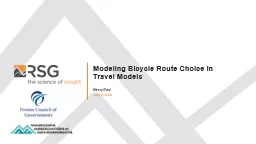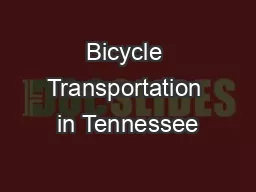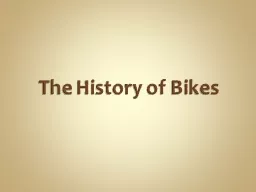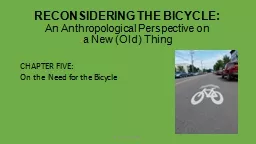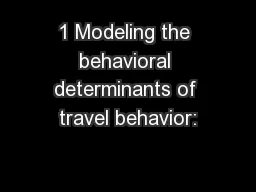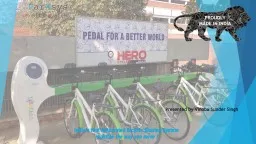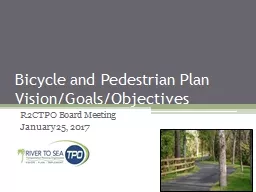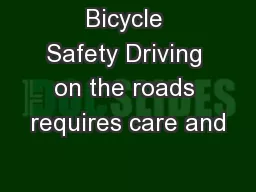PPT-Modeling Bicycle Route Choice in Travel Models
Author : quorksha | Published Date : 2020-08-06
June 4 2019 Binny Paul Background BICYCLE TRANSPORTATION No more only a recreational mode Now a utilitarian alternative for short to medium distance trips Access
Presentation Embed Code
Download Presentation
Download Presentation The PPT/PDF document "Modeling Bicycle Route Choice in Travel ..." is the property of its rightful owner. Permission is granted to download and print the materials on this website for personal, non-commercial use only, and to display it on your personal computer provided you do not modify the materials and that you retain all copyright notices contained in the materials. By downloading content from our website, you accept the terms of this agreement.
Modeling Bicycle Route Choice in Travel Models: Transcript
Download Rules Of Document
"Modeling Bicycle Route Choice in Travel Models"The content belongs to its owner. You may download and print it for personal use, without modification, and keep all copyright notices. By downloading, you agree to these terms.
Related Documents

